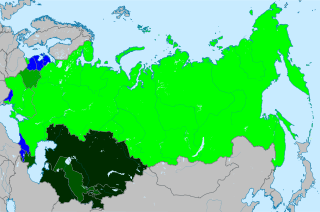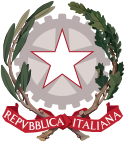
A constitutional referendum was held in Russia on 12 December 1993. The new constitution was approved by 58.4% of voters, and came into force on 25 December.

A constitutional referendum was held in France on 13 October 1946. Voters were asked whether they approved of a new constitution proposed by the Constituent Assembly elected in June. Unlike the May referendum, which saw a previous constitutional proposal rejected, the new Constitution of 27 October 1946 was accepted by 53% of voters, and brought the Fourth Republic into existence. Voter turnout was 68%.

A constitutional and electoral age referendum was held in Denmark on 28 May 1953. Both proposals were approved by voters, leading to both a new constitution taking effect on 5 June, and the electoral age being lowered from 25 to 23 years, also starting on 5 June. Voter turnout was 59.1% for the constitution question and 57.1% for the voting age question.
A constitutional referendum was held in Iceland between 20 and 23 May 1944. The 1 December 1918 Danish–Icelandic Act of Union declared Iceland to be a sovereign state separate from Denmark, but maintained the two countries in a personal union, with the King of Denmark also being the King of Iceland. In the two-part referendum, voters were asked whether the Union with Denmark should be abolished, and whether to adopt a new republican constitution. Both measures were approved, each with more than 98% in favour. Voter turnout was 98% overall, and 100% in two constituencies, Seyðisfjörður and Vestur-Skaftafjellssýsla.
Five referendums were held in Switzerland during 2005. The first two were held on 5 June on Switzerland joining the Schengen Area and whether registered partnerships for same-sex couples should be introduced. Both questions were approved. The third was held on 25 September on a federal resolution on extending the agreement on free movement of people to new members of the European Union, and was also approved. The final two were held on 27 November on a popular initiative "for food from an agriculture free of genetic modification" and on a labour law related to the opening times of shops in public transport hubs. Both were approved.

A referendum on the future of the Soviet Union was held on 17 March 1991 across the Soviet Union. It was the only national referendum in the history of the Soviet Union, although it was boycotted by authorities in six of the fifteen Soviet republics.
A constitutional referendum was held in Albania on 22 November 1998. Voters were asked whether they approved of the constitution. It was approved by 93.5% of voters with a turnout of 50.6%, and came into force on 28 November.
A four-part referendum was held in Hungary on 26 November 1989. Voters were asked whether the President should be elected after parliamentary elections, whether organisations related to the Hungarian Socialist Workers' Party should be banned from workplaces, whether the party should account for properties owned or managed by it, and whether the Workers' Militia should be dissolved. All four proposals were passed, the first narrowly by 50.1% of voters, and the remaining three by 95% of voters. Voter turnout was 58.0%.

An abrogative referendum on the electoral law was held in Italy on 9 June 1991. Voters were asked whether the clause of the law on the number of preference votes should be scrapped. The result was 95.6% in favour, with a turnout of 65.1%.

An abrogative referendum on the electoral law was held in Italy on 18 April 1999. Voters were asked whether they approved of replacing the mixed-member proportional representation electoral system with one based solely on single-member constituencies, with the 25% of seats instead allocated to the second-placed in the constituencies with the most votes. The proposal was supported by larger parties, but opposed by smaller ones. Although the proposal was approved by 92% of voters, turnout was only 49.58%, resulting in the referendum being invalidated as the threshold of 50% was not passed.

A seven-part abrogative referendum was held in Italy on 15 June 1997. Voters were asked whether they approved of the repealing of laws on topics including privatisation, conscientious objectors, hunting, the judiciary and journalists, as well as whether the Ministry of Agrarian Politics should be abolished. Although all seven proposals were approved by voters, the voter turnout of 30% was well below the 50% threshold and the results were invalidated.

A seven-part abrogative referendum was held in Italy on 21 May 2000. Voters were asked whether they approved of the repealing of laws on topics including election funding, the electoral system, the judiciary, employment and union dues. Although all but one of the seven proposals were approved by voters, the voter turnout of 32% was well below the 50% threshold and the results were invalidated.

A double abrogative referendum was held in Italy on 15 May 2003. Voters were asked whether small companies should be forced to re-employ workers they had sacked illegitimately and whether the property owners could refuse to allow electricity cables to be installed on private property. Although both were approved by wide margins, the voter turnout of 26% was well below the 50% threshold and the results were invalidated.
A referendum on allowing unmarried women to have fertility treatment was held in Slovenia on 17 June 2001. The proposal was rejected by 73.3% of voters, with a turnout of only 35.7%.
A referendum on privatisation was held in Slovenia on 19 January 2003. Voters were asked whether Slovenian Railways should be kept as a single company during the privatisation process and whether subscribers to Telekom Slovenije should receive a rebate for the above market price fees paid for cable TV prior to privatisation. The railways question was rejected by 51.9% of voters, whilst the Telekom proposal was approved by 77.6% of voters. Voter turnout was only 31%.
A referendum on political control of Radiotelevizija Slovenija was held in Slovenia on 25 September 2005. Voters were asked whether they approved of increasing political control of the country's public broadcaster. The proposal was approved by 50.7% of voters, although voter turnout was only 30.7%.

A referendum on the transfer of church property was held in Latvia on 1 and 2 September 1923, the first time a referendum had been held in the country. Voters were asked whether the government should be stopped from transferring the Lutheran St James's Church in Riga to the Roman Catholic Church. Although a large majority voted for the proposal, voter turnout was well below the level required, and the church building was subsequently given to the Catholic Church.

A constitutional referendum was held in Lithuania on 10 November 1996 alongside the second round of the parliamentary elections. Voters were asked whether they approved of an amendment to Article 47 of the constitution to add a paragraph allowing EU citizens to buy agricultural land. Although it was approved by 52% of those voting, voter turnout was only 39.7% and the referendum failed to pass the threshold of 50% of registered voters in favour.

A four-part referendum was held in Lithuania on 20 October 1996 alongside the first round of parliamentary elections. Voters were asked whether they approved of three amendments to the constitution and whether money from the sale of state property should be used to compensate those who lost their Soviet-era savings due to inflation. The three constitutional amendments would reduce the number of members of the Seimas, fix the date for elections to be in the spring, and to reserve at least 50% of government expenditure to social spending.
A four-part referendum was held in Switzerland on 11 May 1884. All four were rejected by voters.







